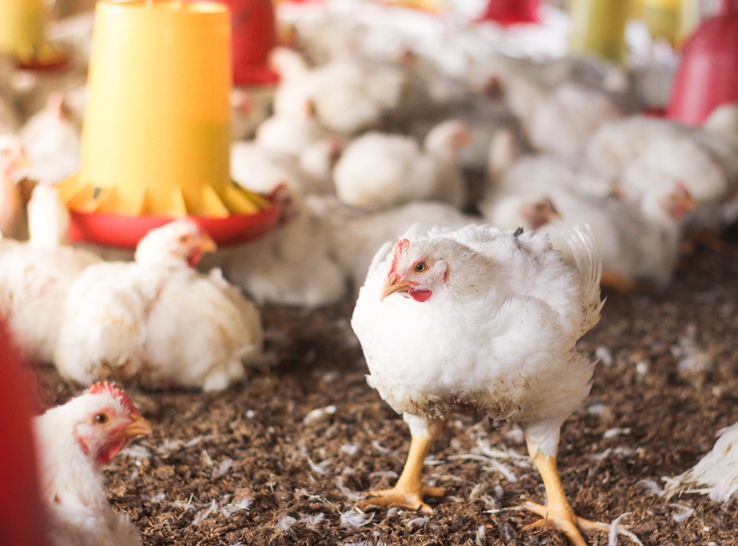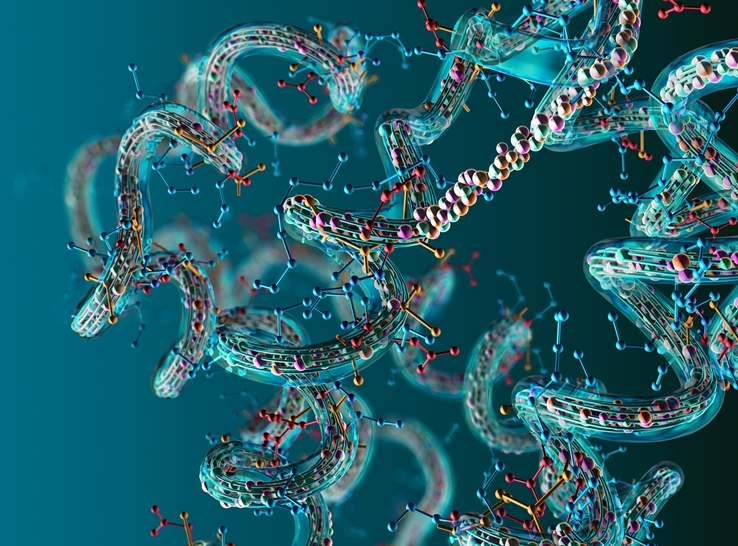Providing the proper stocking density to maximize broiler productivity, welfare and profitability is a balancing act. Because the birds grow dramatically in just a few weeks, space and environmental demands continuously evolve.
Stocking density directly impacts litter and air quality, which are major environmental, welfare, health and management issues on commercial broiler farms. Add in the public’s concern about broiler welfare, and it’s clear that getting broiler stocking density right is a priority.
The National Chicken Council recommends a stocking density of 32 to 44 kg/m2 for broilers. Meanwhile, the welfare group Global Animal Partnership (GAP) recommends 27 to 29 kg/m2 “to accommodate natural preening and stretching,” noted Shengyu Zhou, PhD, research associate, University of Tennessee.
“A lower stocking density may improve bird welfare, but it increases costs and leg use, which has led to just a 2.4% adoption rate for the GAP standards,” Zhou said. “Studies also show that the environment has a greater impact on bird welfare than stocking density alone.”
Zhou and his colleagues conducted a study to measure bird activity and stocking density. He presented the results at the 2025 International Poultry Scientific Forum, illustrating that broiler strains varied in response to their environment, stocking density and the time of day.
Precision-agriculture technologies unlock insights
Precision-agriculture technologies, such as video-action recognition, computer-vision and image-processing systems, are gaining traction on commercial broiler farms to evaluate bird activity and behaviors.
“These systems offer a non-intrusive, real-time solution to gather insight by detecting and counting broiler preening and stretching behaviors,” Zhou said. “Those natural behaviors are key indicators of bird comfort and welfare.”
For their study, the team placed 432 broilers each of Ross 708 and Cobb 700 (n = 864) into 32 pens. Computer-vision systems monitored the birds’ activities, using one camera to oversee two pens. There were four stocking densities based on a 56-day production cycle, with 4 kg (8.8 lbs) as the target bodyweight:
- 10 birds per pen at 27 kg/m2
- 12 birds per pen at 29 kg/m2
- 14 birds per pen at 32 kg/m2
- 18 birds per pen at 44 kg/m2
There were eight replicates per treatment, and all groups received feed ad libitum. The computer-vision cameras continuously monitored bird behavior and activity.
The team used an activity index, which reflects the bird’s overall activity level, comfort and environmental suitability, to indicate health and welfare.
“We extracted images from videos every 0.2 seconds to measure the activity index,” Zhou noted. “On days 28 and 56, we analyzed the first 15 minutes of video from each hour to measure the broilers’ activity index, stretching and preening behaviors.”
Activity-index results
The researchers found that the Ross birds stocked at 44 kg/m2 demonstrated an improved activity index at 28 days. However, at 56 days, the index dropped to the lowest among all groups studied. Zhou pointed out that the decline was due to the fully grown broilers reacting to a crowded environment, restricting movement.
“Day 28 recorded the highest activity index in the early morning, which could reflect the birds’ competing for feed after the dark period without any feed intake,” Zhou said. “We also found that higher activity at the end of the day was likely because birds anticipated the darkness and increased their feed intake before the light was turned off.”
Similarly, the Cobb birds placed in a 44 kg/m2 stocking density had the highest activity index at 28 days, with a decline to very low levels by day 56. However, the Cobbs’ activity remained relatively stable throughout the day, Zhou noted.
“This highlights that different strains differ in their responses to changes in the stocking densities,” he said.
Stretching and preening behaviors
The natural behaviors of stretching and preening are considered indicators of bird welfare. The Ross birds stocked at 44 kg/m2 demonstrated the most stretching behavior at 28 days, but by 56 days, stocking density no longer affected bird stretching. This suggests that higher stocking density before 28 days may promote the expression of welfare-related behavior, Zhou noted.
Additionally, at 28 days, Ross birds displayed more stretching in the morning compared to the afternoon. “Notably, more comfortable temperatures, hunger and human activity such as adding feed in the morning may stimulate birds to perform welfare-related behaviors,” he added.
Cobb birds at the 44 kg/m2 stocking-density rate showed the least stretching behavior at 28 days. In contrast, Cobb birds at the lower stocking density of 29 kg/m2 demonstrated the most stretching behavior at 28 days. By day 56, stretching behavior dropped by 50% and was not greatly affected by stocking density for these birds, Zhou reported.
“Cobb birds showed less variation in the stretching behavior throughout the day than the Ross birds,” he said.
Also, stocking density did not greatly affect the Ross birds’ preening behavior. “This is likely because preening does not require much space,” Zhou said.
Preening decreased for Ross birds from about 10 times per bird per hour at day 28 to six times per bird per hour by day 56. At 28 days, preening was more frequent in the morning than in the afternoon, which mirrored the stretching pattern.
For the Cobb broilers, the 44 kg/m2 stocking density significantly reduced preening behavior at 28 days. By day 56, preening behavior declined significantly, with the highest level observed in the 29 kg/m2 stocking-density group.
Zhou noted that Cobb birds also showed less variation in preening behaviors throughout the day than Ross birds.
Mixed conclusions
The study revealed that the Ross and Cobb broiler strains reacted differently to their environment, stocking density and time of day.
The Ross birds showed a more expected response to more room — 44 kg/m2 — increasing their activity level and stretching at day 28, both of which declined by day 56 due to crowding. Ross birds also expressed more stretching and preening in the morning than in the afternoon.
For Cobb birds, the highest stocking-density level of 44 kg/m2 slightly raised their activity at 28 days but significantly reduced stretching and preening behaviors.
“A stocking density of 44 kg/m2 promoted Ross’s activity and expression of welfare-related behaviors in the early stage but harmed Cobbs’ welfare-related behaviors and expression,” Zhou noted.
The study also illustrated how precision-agriculture technologies offer insights for commercial broiler operations by providing information that can be used to guide workers and improve management practices, he concluded.





